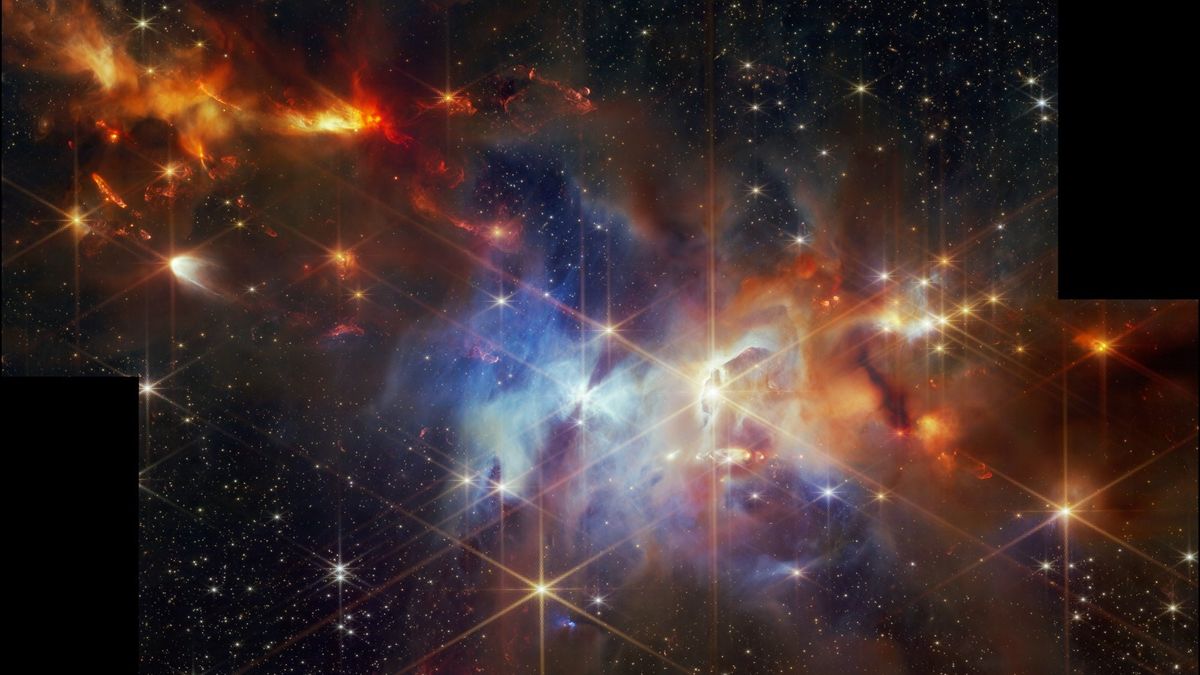The James Webb Space Telescope has taken another extraordinary photo.
The subject is the Serpens Nebula, which lies about 1,300 light-years from Earth. And the new JWST image showcases a very special phenomenon long theorized to exist, but never before observed.
In the upper left part of the photo are several “protostellar outflows,” or jets of gas erupting out of newborn stars. While we’ve seen such outflows before, we’ve never seen them line up in the same direction as in the JWST image; NASA likens them to “sleet pouring down during a storm.”
The alignment of the protostellar outflows provides key insight into how stars form and provides strong support for a long-held theory.
“Astronomers have long assumed that as clouds collapse to form stars, the stars will tend to spin in the same direction,” principal investigator Klaus Pontoppidan, of NASA’s Jet Propulsion Laboratory in Southern California, said in a statement. “However, this has not been seen so directly before. These aligned, elongated structures are a historical record of the fundamental way that stars are born.”
Related: James Webb Space Telescope (JWST) — A complete guide
So why haven’t we seen them before? It all comes down to the perfect alignment. “This area of the Serpens Nebula — Serpens North — only comes into clear view with Webb,” Joel Green, of the Space Telescope Science Institute in Baltimore, said in the same statement. Green is first author of a new study about the outflows, which you can find here.
“We’re now able to catch these extremely young stars and their outflows, some of which previously appeared as just blobs or were completely invisible in optical wavelengths because of the thick dust surrounding them,” Green added.
Chalk up another win to Webb’s incredible imaging power!
This image of the Serpens Nebula is just the first in a series dedicated to the stellar nursery, so here’s to hoping for more discoveries in the near future. Next, JWST will image the nebula with its Near-Infrared Spectrograph instrument to analyze its chemical makeup.
“Looking at the abundance of these critical compounds in protostars just before their protoplanetary disks have formed could help us understand how unique the circumstances were when our own solar system formed,” Pontoppidan said.

Dr. Thomas Hughes is a UK-based scientist and science communicator who makes complex topics accessible to readers. His articles explore breakthroughs in various scientific disciplines, from space exploration to cutting-edge research.








